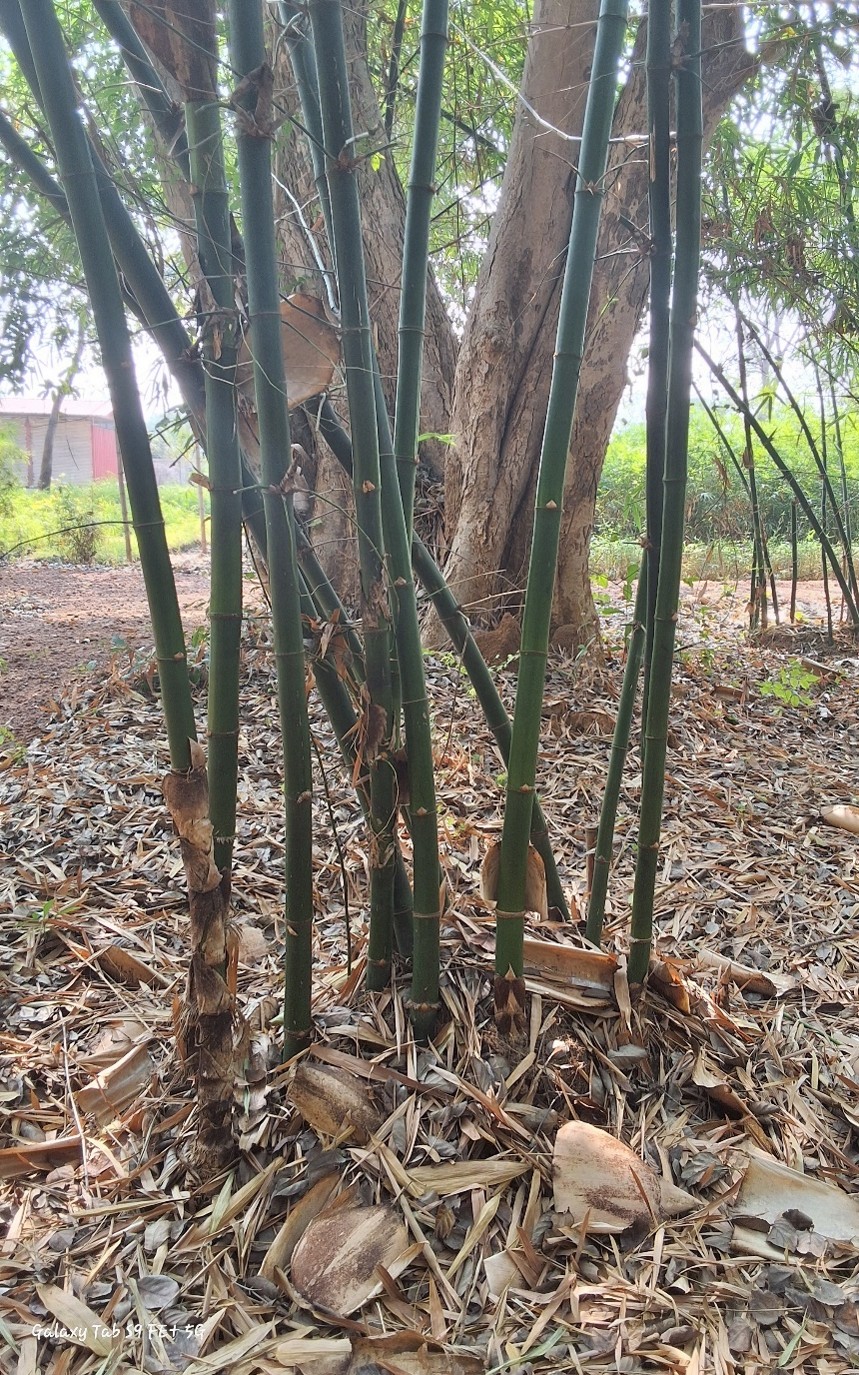Bambusa vulgaris(Green)

Bambusa vulgaris(Green)
Bambusa vulgaris(Green)commonly known as Common Bamboo, Giant Bamboo, Yellow Bamboo, Indian Bamboo, or Green Bamboo, is a clumping bamboo species characterized by dense, erect growth. It typically reaches a height of 10 to 20 meters with a diameter ranging from 5 to 15 cm. The culms are initially green but turn yellow as they mature, and they have an internode length of 30 to 50 cm. The culm sheath is green when young, turning brown as it matures, with a smooth and glabrous adaxial surface and a hairy abaxial surface that smoothens with age. The sheath also has ciliate margins. The leaves are narrow-lanceolate to lanceolate, with pointed tips, and measure 15 to 30 cm in length and 2.5 to 5 cm in breadth. This species thrives at altitudes ranging from 100 meters to 1,200 meters, and it prefers a variety of soil types, including loamy, sandy, and clayey soils, as long as they are well-drained and moist.
Native to Southeast Asia, India, and parts of China, Bambusa vulgaris is widely cultivated across tropical and subtropical regions of the world. It typically grows in moist, well-irrigated forests and forest margins. The inflorescence of this bamboo species consists of a small panicle with bracteate heads and spicate branching. The glumes are ovate to acute, with fine nervation, and the flowering glumes are larger and ciliate at the edges. Flowers rarely occur in gregarious cycles, typically once every 30 to 50 years, and have been reported in parts of India, Southeast Asia, and the Philippines. While Bambusa vulgaris can produce small seeds, they are generally not viable, and the bamboo is mainly propagated through vegetative methods, such as clump division, culm cuttings, offsets, and tissue culture.
The uses of Bambusa vulgaris are vast. It is widely used in construction for scaffolding, poles, furniture, and building materials, and its pulp is used in paper production. The bamboo's edible shoots are a delicacy in Southeast Asian cuisine, and it is commonly used in craftwork for making baskets, mats, and small household items. It also plays a significant role in soil erosion control, particularly in tropical regions, and is utilized for fuelwood in firewood and charcoal production. Additionally, it is cultivated for ornamental purposes in gardens, parks, and landscapes due to its tall, elegant appearance. Bambusa vulgaris thrives in areas with an annual rainfall range of 1500 mm to 3000 mm.
Listen Audio:
Need assistance? BRTC Faculty